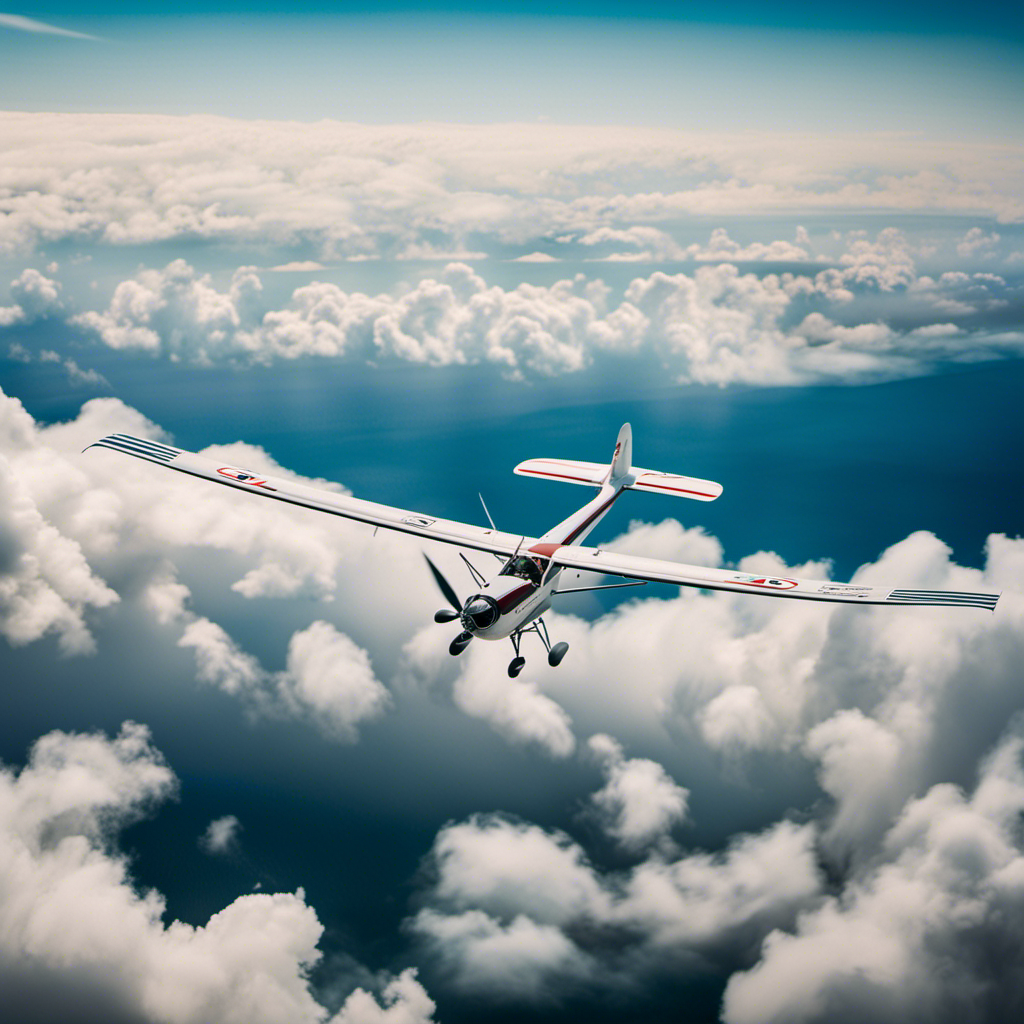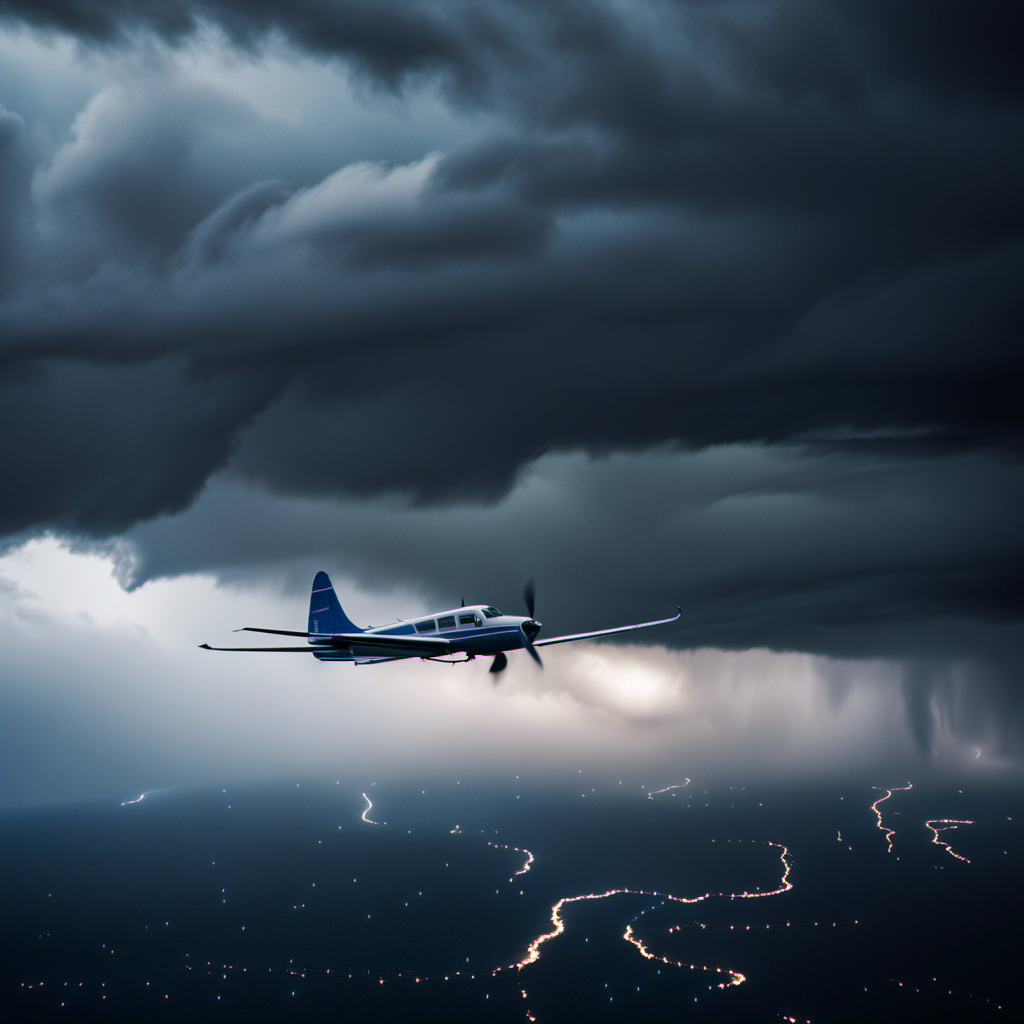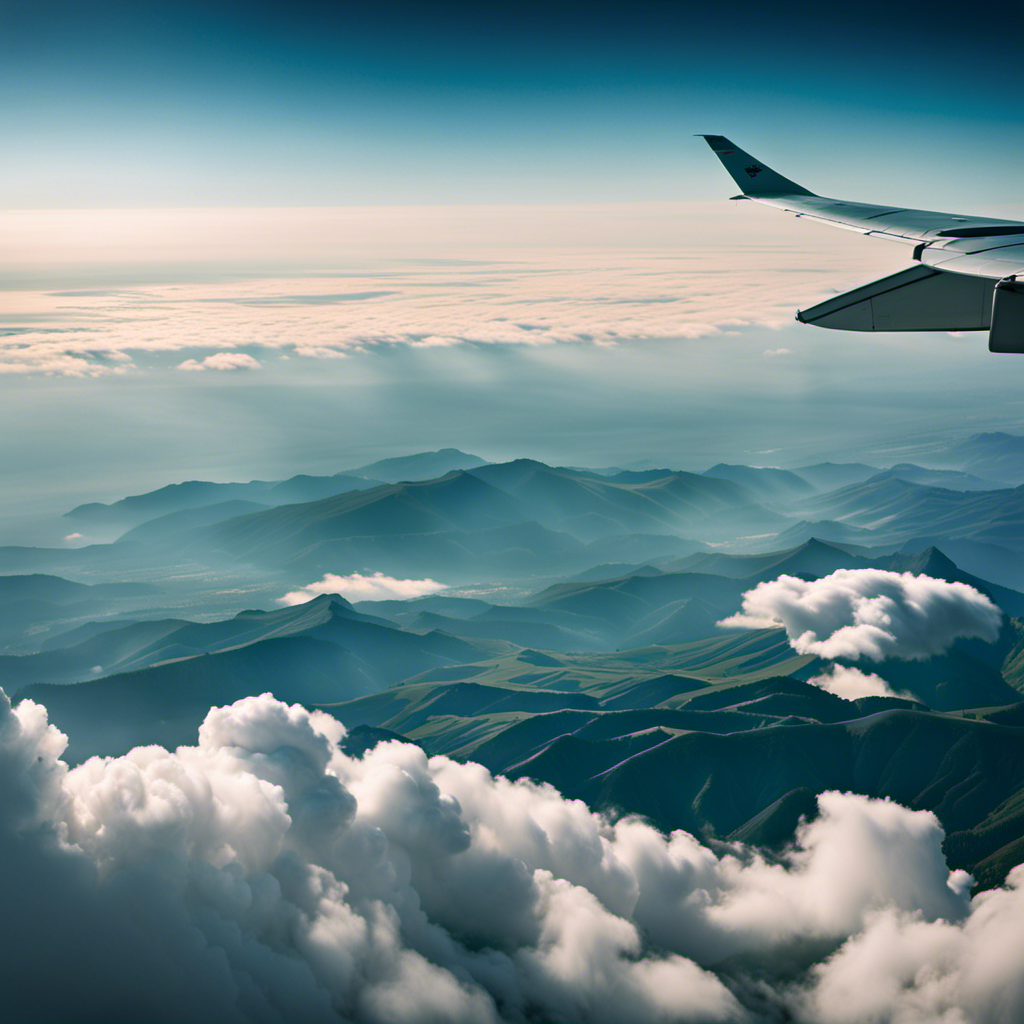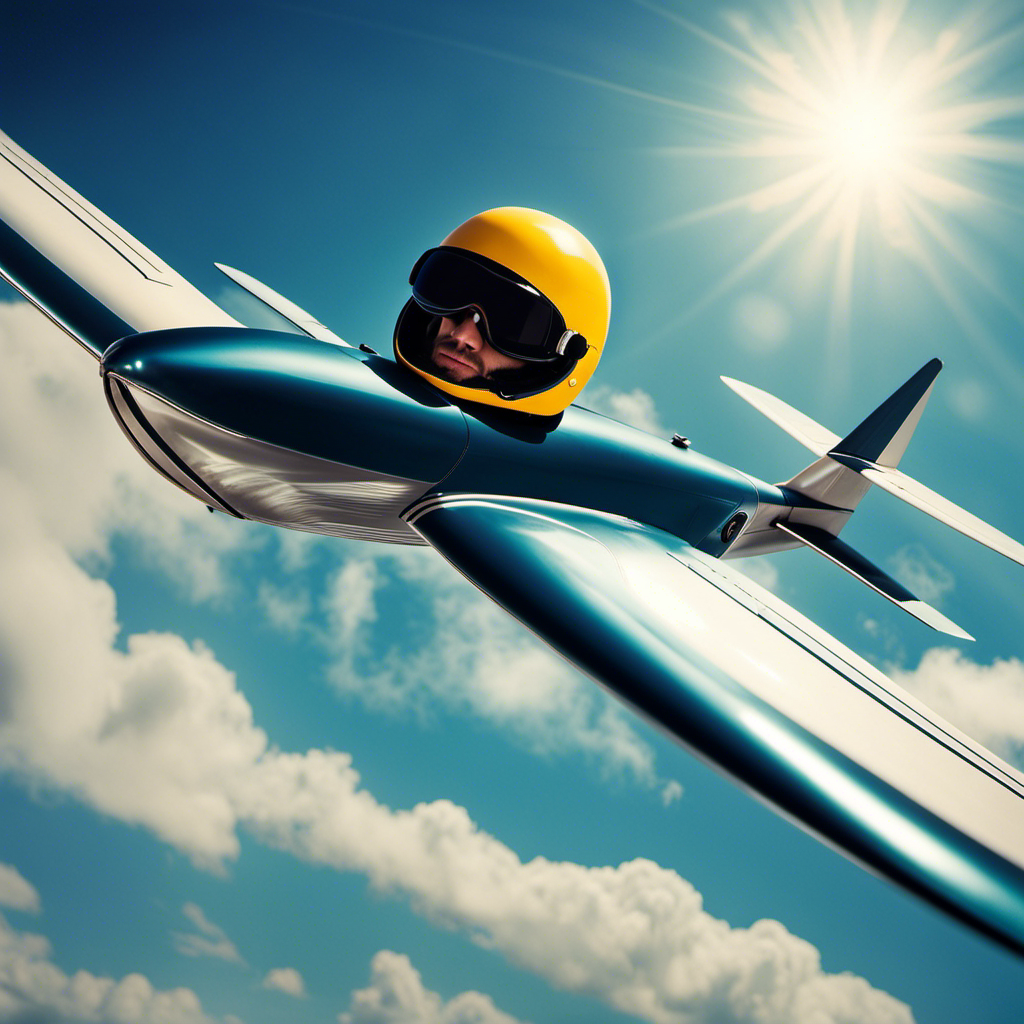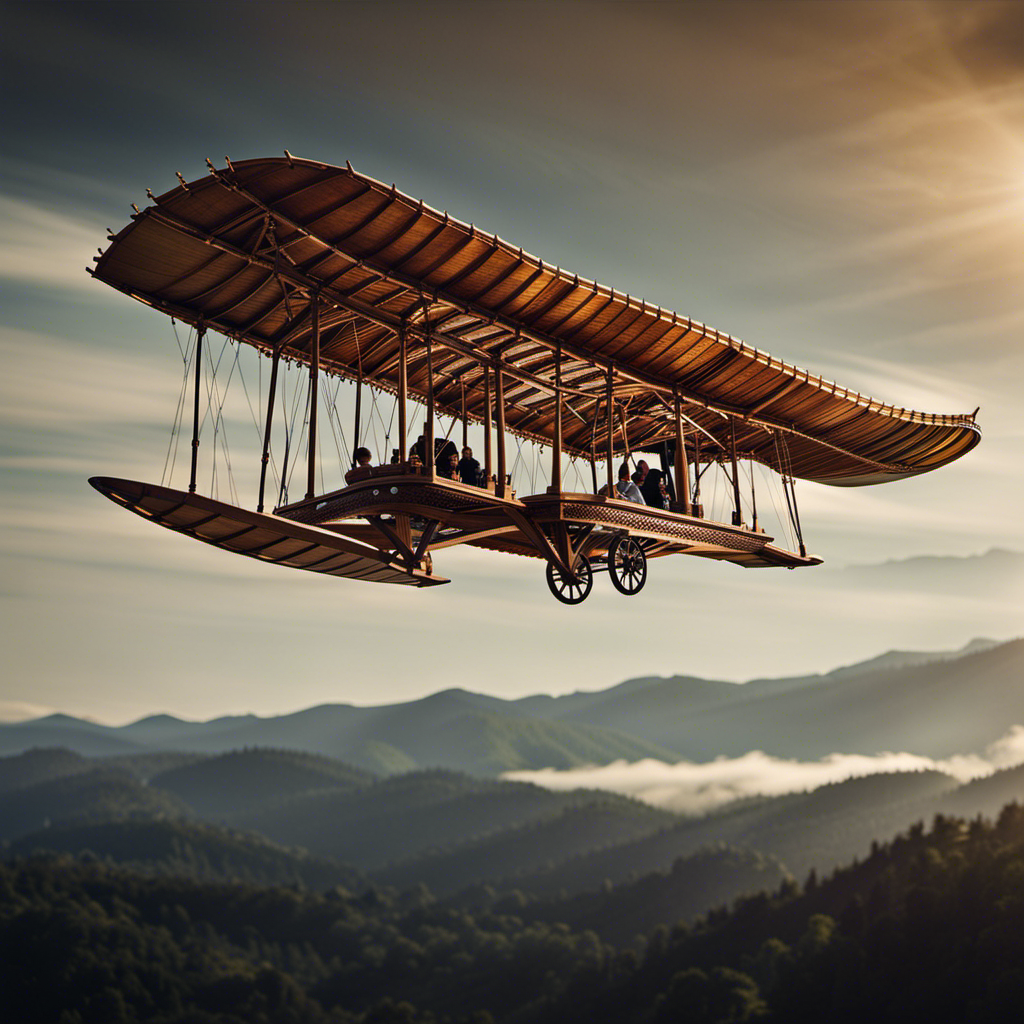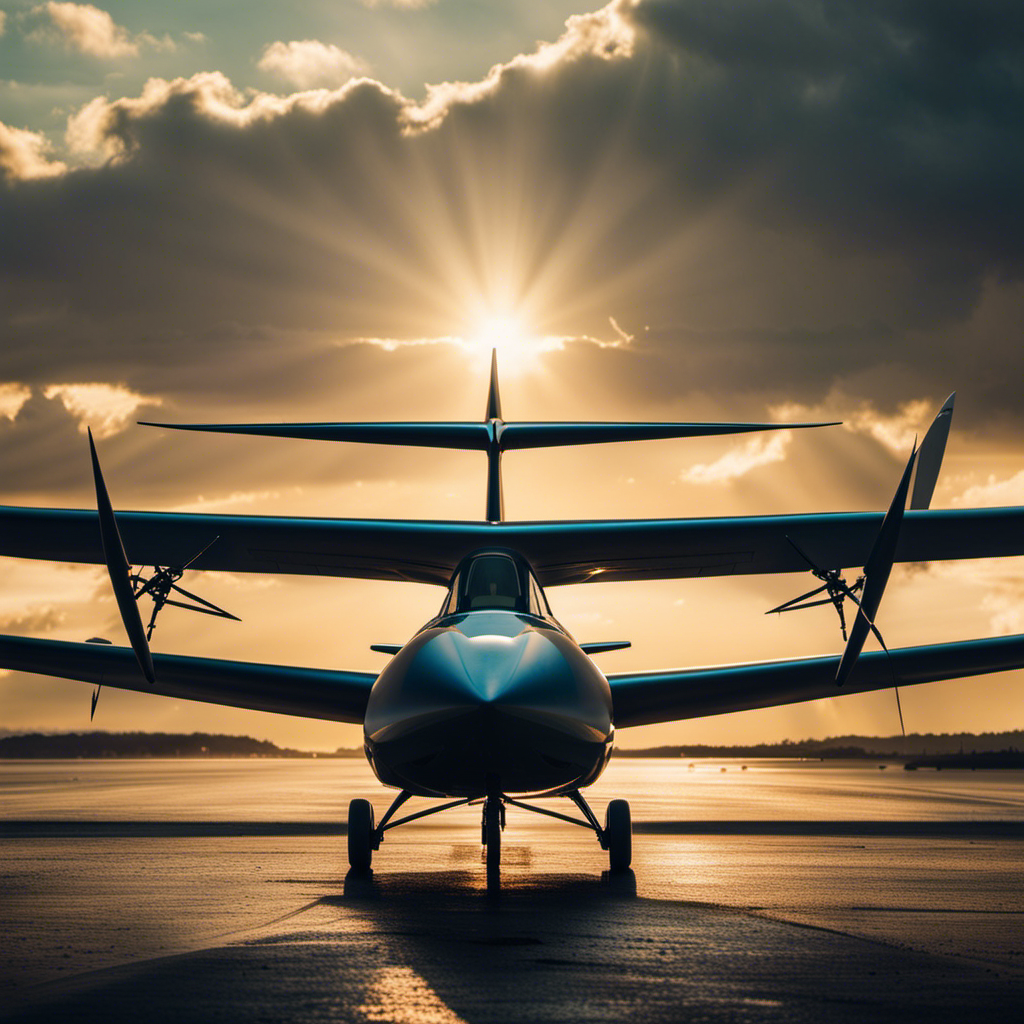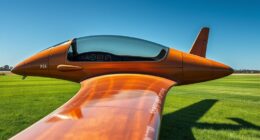Many people say that there is no limit to what can be achieved, but in the world of gliding, limits are nonexistent. With the right training and equipment, anyone can experience the thrill of flying a glider.
In this article, I’ll delve into the world of gliding, exploring the safety considerations, physical requirements, costs, and accessibility. I’ll also uncover the latest innovations and technology in the gliding community, as well as highlight famous gliders and their records.
So buckle up and let’s soar into the world of gliding.
Key Takeaways
- Gliding requires regular inspections, maintenance, and adherence to safety protocols for a safe experience.
- Physical requirements include endurance, flexibility, and upper body strength.
- Gliding can be an expensive hobby with costs varying based on glider type, maintenance, and club fees.
- Learning to glide involves finding a reputable school or club, understanding aerodynamics, and gaining experience through practice.
What is Gliding?
Gliding is a recreational activity where pilots soar through the air in a motorless aircraft. It is an exhilarating experience that requires meticulous glider maintenance to ensure the aircraft’s safety and performance.
Regular inspections, repairs, and maintenance checks are crucial to keep the glider in top condition. Additionally, gliding competitions are a significant part of the sport, where pilots showcase their skills and compete against each other in various categories. These competitions test pilots’ abilities to navigate challenging courses, utilize thermals, and demonstrate precise control over their gliders.
While gliding is a thrilling activity, safety considerations are paramount. Pilots must always be aware of weather conditions, have proper training, and adhere to established safety protocols to mitigate risks and ensure a safe and enjoyable gliding experience.
Safety Considerations
When it comes to safety, it’s important to consider various factors before operating a glider. One of the most crucial aspects to consider is the safety equipment. Before taking off, it’s essential to ensure that you have the necessary safety equipment, such as a parachute, emergency locator transmitter, and a first aid kit.
Additionally, having a thorough understanding of the prevailing weather conditions is paramount. Weather conditions can greatly impact the safety of your flight. It’s important to assess factors such as wind speed, direction, and turbulence before deciding to fly.
By carefully considering these factors, you can mitigate the risks associated with gliding.
Now, let’s delve into the physical requirements for flying a glider.
Physical Requirements
Assessing your physical fitness is crucial before operating a glider. As a pilot, you need to be in peak condition to handle the physical demands of flying. Here are three key factors to consider:
-
Endurance: Flying a glider requires prolonged periods of sitting and maintaining focus. Stamina and endurance are essential to ensure you can handle long flights without becoming fatigued.
-
Flexibility: In the cockpit, you may need to maneuver in tight spaces and reach controls. Flexibility in your joints and muscles is vital for smooth and efficient operation.
-
Strength: Operating a glider involves physical exertion, such as pulling controls and handling the aircraft on the ground. Having adequate strength in your upper body is essential to carry out these tasks.
Meeting the physical fitness and medical requirements is crucial to ensure your safety and the safety of others while operating a glider. Once you have assessed your physical readiness, you can move on to considering the costs and accessibility of flying a glider.
Costs and Accessibility
It’s important to consider the costs and accessibility of flying a glider before making a commitment. Gliding can be an expensive hobby, with costs varying depending on factors such as the type of glider, maintenance, and club fees. Additionally, accessibility to gliding facilities may be limited, especially in certain regions or during certain times of the year. To give you an idea of the costs involved, here’s a table illustrating the average expenses associated with gliding:
| Expense | Cost |
|---|---|
| Glider purchase | $10,000 – $100,000 |
| Annual maintenance | $2,000 – $5,000 |
| Club fees | $500 – $1,500 |
| Instructional costs | $100 – $300 per lesson |
Considering these costs and the availability of gliding facilities in your area is crucial before embarking on this adventure. Now, let’s delve into the next section and explore the process of learning to glide.
Learning to Glide
To learn how to glide, you’ll need to start by finding a reputable gliding school or club in your area. Here are three key things to consider when embarking on your gliding journey:
-
Learning techniques: Gliding requires a solid understanding of aerodynamics and flight principles. Your gliding school will teach you the necessary techniques, such as how to control the glider using weight shift and how to read the wind and thermals to stay aloft.
-
Safety precautions: Safety is paramount in gliding. You’ll learn how to perform pre-flight checks, manage emergency situations, and navigate airspace. Your instructors will emphasize the importance of maintaining situational awareness and adhering to established safety protocols.
-
Practice and experience: Gliding is a skill that takes time to master. Regular practice and experience are crucial for building confidence and improving your abilities. As you progress, you’ll have the opportunity to fly solo and participate in cross-country flights.
With these essential learning techniques and safety precautions in mind, you can now delve into the thrilling world of gliding, where the possibilities are endless.
The Thrill of Gliding
Experience the exhilarating sensation of soaring through the sky as you effortlessly glide through the air in a glider.
The thrill of soaring in a glider is like no other. As you climb higher and higher, the rush of adrenaline courses through your veins. The feeling of freedom and weightlessness is simply indescribable.
The glider’s wings cut through the air, allowing you to navigate the currents and thermals with ease. The sheer speed and precision of gliding make it an exhilarating experience. It’s a true test of skill and concentration as you harness the power of the wind.
Gliding is not just a hobby; it’s a way of life, a pursuit of the ultimate thrill in the sky.
Gliding as a Hobby
As a hobby, gliding offers a unique and thrilling experience that cannot be replicated by any other activity. Gliding competitions allow gliders to test their skills and compete against each other for the title of champion.
To fully enjoy this exhilarating pastime, it is essential to have the right gliding equipment. A high-performance glider, equipped with advanced instruments and controls, is crucial for a successful flight. Additionally, a parachute is a must-have safety equipment in case of emergencies.
The gliding community is also known for its strong sense of camaraderie, with enthusiasts coming together to share their knowledge and experiences. Gliding as a hobby not only provides an adrenaline rush but also fosters a sense of belonging.
Transitioning into the next section, gliding for travel allows us to explore new destinations from a unique perspective.
Gliding for Travel
Imagine soaring through the sky and taking in breathtaking views of new destinations as you glide effortlessly through the air. Gliding for tourism offers a unique and thrilling way to explore the world.
With the wind as your guide, you can embark on thrilling adventures and witness stunning landscapes from a whole new perspective. Gliding for adventure allows you to experience the adrenaline rush of flying without an engine, relying solely on the skill of maneuvering the glider through the air currents. It is a perfect activity for thrill-seekers who crave excitement and a sense of freedom.
However, gliding for travel is not just about the thrill; it also provides an opportunity to appreciate the beauty and serenity of nature.
Transitioning into the next section, gliding as a career requires dedication and expertise in order to pursue this exhilarating profession.
Gliding as a Career
Transitioning into a career in gliding requires a combination of dedication, expertise, and a love for the thrill of flying. As someone who has pursued gliding as a profession, I can attest to the incredible job opportunities and the fulfillment it brings.
Here are three key aspects of gliding as a career:
-
Job Opportunities: Gliding offers a range of exciting career paths, including becoming a glider pilot, instructor, or even a test pilot for glider manufacturers. With the growing popularity of gliding, there is a demand for skilled professionals in various positions.
-
Professional Training: To embark on a career in gliding, it is essential to undergo professional training. This involves learning the principles of aerodynamics, navigation, and meteorology, as well as obtaining the necessary certifications and licenses.
-
Continuous Learning: Gliding is an ever-evolving field, and as a professional glider pilot, it is crucial to stay updated with the latest advancements in technology and techniques. Continuous learning and improvement are vital to excel in this career.
Transitioning from discussing gliding as a career, let’s now explore the next section about overcoming fear and anxiety during gliding experiences.
Overcoming Fear and Anxiety
To conquer fear and anxiety during your gliding experiences, it’s important to focus on your breathing and remind yourself of your training. Overcoming fear and managing anxiety are crucial for a successful and enjoyable gliding adventure. One effective technique is to practice deep breathing exercises before and during your flight. This helps to calm your mind and relax your body, allowing you to better concentrate on the task at hand. Another helpful strategy is to remind yourself of your training and the safety measures in place. This knowledge will give you confidence and reassurance throughout the flight. By implementing these techniques, you can effectively overcome fear and anxiety, allowing you to fully enjoy the exhilaration of gliding.
| Overcoming Fear and Anxiety | |
|---|---|
| Focus on Breathing | Remind yourself of training |
| Practice deep breathing exercises | Reassure yourself with knowledge |
| Concentrate on the task at hand | Gain confidence from safety measures |
| Relax your mind and body | Enjoy the exhilaration of gliding |
Gliding Etiquette and Rules
When it comes to gliding, there are several key points to consider for safe and efficient flying.
Firstly, understanding air traffic control and effective communication is crucial for coordinating with other aircraft and ensuring smooth operations.
Secondly, knowing the rules of right of way and practicing collision avoidance techniques are essential for preventing accidents and maintaining a safe airspace.
Lastly, respecting the environment by adhering to environmental regulations and minimizing noise pollution is important to preserve the natural surroundings and maintain good relationships with local communities.
Air Traffic Control and Communication
Do you know how important it is to maintain clear communication with air traffic control when flying a glider? As a glider pilot, I understand the significance of efficient radio communication in ensuring safe operations. In the realm of air traffic management, effective communication plays a pivotal role in coordinating glider flights and maintaining overall airspace safety. By adhering to strict radio protocols, pilots can transmit and receive critical information regarding weather conditions, airspace restrictions, and other aircraft movements. To give you a better understanding, here is a table highlighting the key elements of radio communication in gliding.
| Key Elements | Importance | Example |
|---|---|---|
| Readback | Ensures accuracy of instructions | "Glider A, cleared to land runway 24, readback approved." |
| Frequency Change | Facilitates smooth airspace transitions | "Glider B, frequency change approved, contact tower on 118.1." |
| Position Reports | Maintains situational awareness | "Glider C, position 10 miles southwest of the airfield, descending to 2,000 feet." |
Maintaining clear communication with air traffic control is just one aspect of glider flying. Another critical aspect is understanding right of way and collision avoidance, which we will explore in the next section.
Right of Way and Collision Avoidance
Understanding right of way and practicing collision avoidance is crucial for maintaining safety while flying a glider. As a glider pilot, I must be aware of the rules and regulations regarding right of way in the sky. This means knowing who has priority when it comes to airspace and how to react in different situations.
By understanding right of way, I can avoid potential collisions and ensure the safety of myself and others. Collision avoidance techniques, such as scanning the sky for other aircraft and maintaining a safe distance, are also essential. By constantly being vigilant and proactive, I can minimize the risk of accidents and ensure a smooth and safe flight.
Respecting the environment is another important aspect of glider flying, as we must be mindful of our impact on the natural surroundings without compromising safety.
Respecting the Environment
As a glider pilot, it’s important to prioritize safety and respect the environment. Environmental impact is a significant concern in aviation, including gliding. Sustainable practices should be followed to minimize negative effects on the environment.
This includes adhering to designated flight paths, avoiding sensitive areas like wildlife habitats or protected land, and minimizing noise pollution. Glider pilots should also be mindful of the materials used in their aircraft and choose eco-friendly alternatives when possible.
By adopting these sustainable practices, we can ensure that our gliding activities have minimal impact on the environment. This allows us to continue enjoying this exhilarating sport for years to come.
Now, let’s explore the exciting world of gliding innovations and technology.
Gliding Innovations and Technology
Advancements in gliding technology have made it easier for pilots to navigate and control gliders. These gliding advancements are shaping the future of gliding, allowing for safer and more efficient flights.
Here are some key innovations in gliding technology:
-
Improved aerodynamics: Modern gliders are designed with sleek and streamlined shapes, reducing drag and increasing glide ratios.
-
Advanced cockpit instruments: Pilots now have access to sophisticated instruments that provide real-time information on airspeed, altitude, and wind conditions, enhancing situational awareness.
-
Electronic flight bags: These digital devices store navigation charts, flight plans, and weather updates, replacing traditional paper charts and reducing cockpit clutter.
-
Fly-by-wire systems: Some gliders are equipped with electronic flight control systems, offering precise and effortless control for pilots.
As gliding technology continues to evolve, the future of gliding looks promising, with even more advanced systems and innovations on the horizon. With these advancements, gliding will become more accessible to individuals of all ages and skill levels.
Gliding for Different Age Groups
When it comes to gliding, there are different age groups to consider.
Gliding for children and teens provides a unique opportunity for them to experience the thrill of flight and learn valuable skills.
Adults and seniors can also enjoy gliding as a recreational activity, providing a sense of adventure and relaxation.
Additionally, there are family-friendly gliding activities that allow everyone to participate and create lasting memories together.
Gliding for Children and Teens
Children and teens can learn to fly gliders with proper training and supervision. As an experienced glider pilot, I understand the importance of providing a safe and nurturing environment for young enthusiasts. Here are three reasons why gliding can be a rewarding experience for children and teens:
-
Building confidence: Gliding competitions allow young pilots to showcase their skills and gain confidence in their abilities, boosting their self-esteem.
-
Learning discipline: Gliding requires following strict safety measures, teaching children and teens the importance of discipline and responsibility.
-
Developing teamwork: Gliding often involves working in teams, fostering collaboration and communication skills.
Transitioning into the next section about ‘gliding for adults and seniors,’ it is worth noting that the joy and satisfaction of gliding are not limited to any particular age group.
Gliding for Adults and Seniors
As an adult or senior, you can experience the joy and satisfaction of gliding, regardless of your age. Gliding is a fantastic activity for beginners, as it provides a safe and exhilarating introduction to aviation.
The health benefits of gliding are numerous. The physical demands of operating the glider’s controls and maintaining proper body posture help improve strength, flexibility, and coordination. Additionally, the mental focus required for flying promotes mindfulness and reduces stress.
Gliding also offers a unique opportunity to connect with nature and experience the beauty of the sky from a different perspective. So, if you’re looking for a thrilling yet gentle way to stay active and enjoy the outdoors, gliding is the perfect choice.
Now let’s explore some family-friendly gliding activities that everyone can enjoy.
Family-Friendly Gliding Activities
Gliding offers a fun and memorable way for the whole family to enjoy time together in the sky. With a range of family-friendly activities and options, gliding is an accessible and exciting adventure for beginners of all ages.
Whether you’re looking for a gentle introduction to gliding or a more adrenaline-pumping experience, there are options to suit every family member. Gliding clubs often offer special family packages, allowing everyone to experience the thrill of flying in a glider. These packages usually include a briefing on gliding basics, a flight with a qualified instructor, and the opportunity for each family member to take the controls. It’s a fantastic way to bond with your loved ones while discovering the beauty of soaring through the air.
Now, let’s explore some famous gliders and the incredible records they have achieved.
Famous Gliders and Gliding Records
The Wright brothers’ glider was a significant milestone in aviation history. It paved the way for famous glider pilots to push the boundaries of flight and set new gliding records. In the world of gliding competitions, these pilots became legends.
Some of them include:
- Otto Lilienthal: Known as the ‘Glider King,’ Lilienthal made over 2,000 glider flights and greatly influenced the Wright brothers.
- Hanna Reitsch: A renowned German aviator, Reitsch was the first woman to fly a glider aerobatically and set numerous gliding records.
These pilots showcased their skills and pushed the limits of what was possible in gliding. Their achievements continue to inspire and motivate glider enthusiasts around the world.
Transitioning into the next section, the gliding community and support play a vital role in nurturing and advancing this exhilarating sport.
Gliding Community and Support
You can find a strong sense of camaraderie and support within the gliding community. Gliding is not just about individual flights; it is also about being part of a larger group that shares a common passion for soaring through the skies.
Gliding competitions serve as a platform for gliders to come together and showcase their skills. These events foster a sense of friendly competition and camaraderie among participants.
Gliding clubs play a crucial role in nurturing this sense of community. They offer a space where gliders can connect, learn from each other, and participate in group activities. Whether it’s sharing tips and tricks, organizing training sessions, or simply enjoying social gatherings, gliding clubs provide a supportive environment that enhances the overall gliding experience.
Frequently Asked Questions
What are some famous gliders and records in the gliding community?
In the gliding community, some famous gliders include the ASW 27, Discus 2, and JS1 Revelation. These gliders have set records in various categories such as distance, speed, and altitude, showcasing the advancements in gliding technology.
What are some gliding innovations and technologies that have been developed?
Electric gliders have revolutionized the gliding industry, with advancements in battery technology allowing for longer flight times. Autonomous gliders, equipped with advanced navigation systems, can now fly independently, opening up new possibilities for research and exploration.
What are the physical requirements for gliding?
To fly a glider, one must possess a certain level of physical fitness and meet health restrictions. These requirements ensure the pilot’s ability to handle the physical demands of gliding and maintain safety during flight.
How much does it typically cost to learn to glide and is it accessible to everyone?
The cost of learning to glide can vary, but on average it can range from $2,000 to $5,000. While gliding is accessible to most individuals, physical fitness and age restrictions may apply.
Can gliding be a potential career option?
Gliding can be pursued as a profession, with opportunities in areas such as aerobatics, instructing, and competition flying. It can also be a competitive sport, offering challenges and rewards for skilled pilots.
Conclusion
In conclusion, gliding is an exhilarating sport that anyone can learn and enjoy. With the right safety precautions, physical fitness, and training, you can soar through the skies like a bird.
Gliding is not only accessible but also a cost-effective way to experience the thrill of flight. So why wait? Take the leap and spread your wings in the world of gliding.
Remember, the sky’s the limit, and with gliding, you can reach for the stars.
